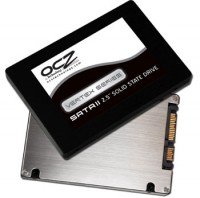Later this year, solid-state drives (SSDs) are expected to drop beneath that magical barrier that really spurs adoption: $1 per gigabyte (GB) from a relatively lofty $1.56 in 2011. According to IDC, SSDs will reach this milestone in the second half of 2012. (Pro tip: hold off on that upgrade ’til then.)
Mind you, SSDs are still way more expensive than traditional hard drives and will likely remain that way for a while — average HDD prices hovered round 7.5 cents per GB in 2011. But SSD prices are falling faster, an encouraging sign for PC users that want to take advantage of the performance perks and energy savings that the storage tech offers.
IDC pegs 2011 worldwide solid state storage industry revenue at $5 billion in 2011, a 105 percent increase over 2010’s $2.4 billion haul. The research firm also forecasts a 51.5 percent compound annual growth rate for worldwide SSD shipments from 2010 to 2015.
HDD manufacturing hit hard by Thailand floods
Part of the reason prices will fall in the near term are the floods in Thailand, which have drastically reduced hard drive manufacturing output. Analysts expect shipments in Q1 2012 to fall short of Q4 2011’s 95 million unit mark by roughly 11 percent.
The expected shortages will nudge PC makers into the direction of SSDs. Judging by the slew of Ultrabooks announced at CES — a form factor that practically requires SDD storage — that’s already happening. Microsoft’s SSD-friendly Windows 8 OS also gets a shout-out as a driver for increased SSD sales in 2012.
Enterprises dig SSDs
Enterprise-wise, SSDs have been enjoying increased popularity thanks to web-facing companies that value the performance edge and thriftier power requirements that SSDs offer.
Startups like Fusion-io, Violin Memory and SolidFire have been turning big companies on to SSDs in the data center. For instance, Fusion-io counts Facebook among its customers and signed Dell as an OEM. Meanwhile, Violin nabbed some rack space at Microsoft, AOL and HP.
SSD maker OCZ Technology is watching its fortunes improve due to interest from enterprises. CEO Ryan Peterson had this to say during yesterday’s earnings call:
“Taking a look at revenue by product classification, the largest sequential revenue gains this quarter were generated from our enterprise and high-performance server products. Enterprise-class SSD revenue increased approximately 50% sequentially and was about 21% of SSD sales. This is our third consecutive quarter of 50%-plus sequential growth within our enterprise products.”
It all adds up to a good year for SSD companies, according to IDC’s data storage guru Jeff Janukowicz Janukowicz. He writes, “The increasing use of flash in enterprise solutions, explosive growth of mobile client devices, and lower SSD pricing is creating a perfect storm for increased SSD shipments and revenue over our forecast.”

